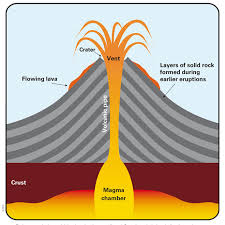Discover the Enchantment of Hawaii Island: A Paradise for Nature Lovers and Adventure Seekers

Welcome to Hawaii Island
Hawaii, also known as the Big Island, is a captivating destination that offers a diverse range of landscapes and experiences for visitors to explore. From lush rainforests to volcanic deserts, this island is a paradise for nature lovers and adventure seekers alike.
One of the most iconic features of Hawaii Island is its active volcanoes, including Kilauea and Mauna Loa. Visitors can witness the raw power of these volcanoes up close and even hike through lava fields to see the land being formed before their eyes.
For those seeking relaxation, the island also boasts stunning beaches with crystal-clear waters perfect for swimming, snorkeling, or simply soaking up the sun. The black sand beaches on the island’s southern coast are particularly unique and offer a one-of-a-kind beach experience.
In addition to its natural beauty, Hawaii Island is rich in culture and history. Visitors can immerse themselves in traditional Hawaiian practices, such as hula dancing and lei making, or learn about the island’s fascinating past at historical sites like Pu’uhonua o Honaunau National Historical Park.
Whether you’re looking for adventure, relaxation, or cultural enrichment, Hawaii Island has something for everyone. Come discover the magic of this enchanting island and create memories that will last a lifetime!
Top 5 Must-Do Experiences on Hawaii Island: Beaches, Volcanoes, Luaus, Marine Adventures, and Waterfalls
- Visit the stunning beaches like Waikiki Beach and Hapuna Beach.
- Explore the unique volcanic landscapes at Hawaii Volcanoes National Park.
- Attend a traditional luau to experience Hawaiian culture and cuisine.
- Go snorkeling or scuba diving to discover the vibrant marine life of Hawaii.
- Hike to beautiful waterfalls like Akaka Falls or Manoa Falls for breathtaking views.
Visit the stunning beaches like Waikiki Beach and Hapuna Beach.
When exploring Hawaii Island, be sure to visit the stunning beaches like Waikiki Beach and Hapuna Beach. Waikiki Beach is renowned for its golden sands, clear waters, and vibrant atmosphere, making it a popular destination for sunbathing and water sports. On the other hand, Hapuna Beach boasts pristine white sands and turquoise waters, perfect for swimming and snorkeling. Both beaches offer breathtaking views and a relaxing ambiance that captures the essence of Hawaii’s natural beauty.
Explore the unique volcanic landscapes at Hawaii Volcanoes National Park.
Explore the unique volcanic landscapes at Hawaii Volcanoes National Park to witness the awe-inspiring power of nature up close. From towering volcanic craters to steaming vents and lava fields, this park offers a glimpse into the dynamic forces that shape Hawaii Island. Hike along scenic trails, marvel at glowing lava flows, and learn about the island’s geological history at this iconic national park. It’s an unforgettable experience that showcases the raw beauty and resilience of Hawaii’s volcanic landscapes.
Attend a traditional luau to experience Hawaiian culture and cuisine.
Attending a traditional luau on Hawaii Island is a must-do experience for visitors looking to immerse themselves in Hawaiian culture and cuisine. From the mesmerizing hula dances to the tantalizing flavors of local dishes like kalua pig and poi, a luau offers a vibrant celebration of the island’s rich heritage. By participating in this festive gathering, guests can gain a deeper appreciation for the traditions and customs that have shaped Hawaiian society for generations. It’s an opportunity to not only savor delicious food but also to witness captivating performances that showcase the spirit and essence of Hawaii.
Go snorkeling or scuba diving to discover the vibrant marine life of Hawaii.
Immerse yourself in the underwater wonders of Hawaii Island by going snorkeling or scuba diving. Explore the vibrant marine life that thrives in the crystal-clear waters surrounding the island, from colorful coral reefs to schools of tropical fish. Witness the beauty and diversity of Hawaii’s underwater world firsthand, and create unforgettable memories as you swim among sea turtles, dolphins, and other fascinating marine creatures. Snorkeling or scuba diving in Hawaii is an experience not to be missed for nature enthusiasts and adventure seekers alike.
Hike to beautiful waterfalls like Akaka Falls or Manoa Falls for breathtaking views.
Embark on a captivating adventure on Hawaii Island by hiking to picturesque waterfalls such as Akaka Falls or Manoa Falls. These stunning natural wonders offer breathtaking views that will leave you in awe of the island’s beauty. The lush surroundings, soothing sounds of cascading water, and serene atmosphere make these hikes a must-do for nature enthusiasts and those seeking a peaceful escape in the heart of Hawaii’s enchanting landscapes.








